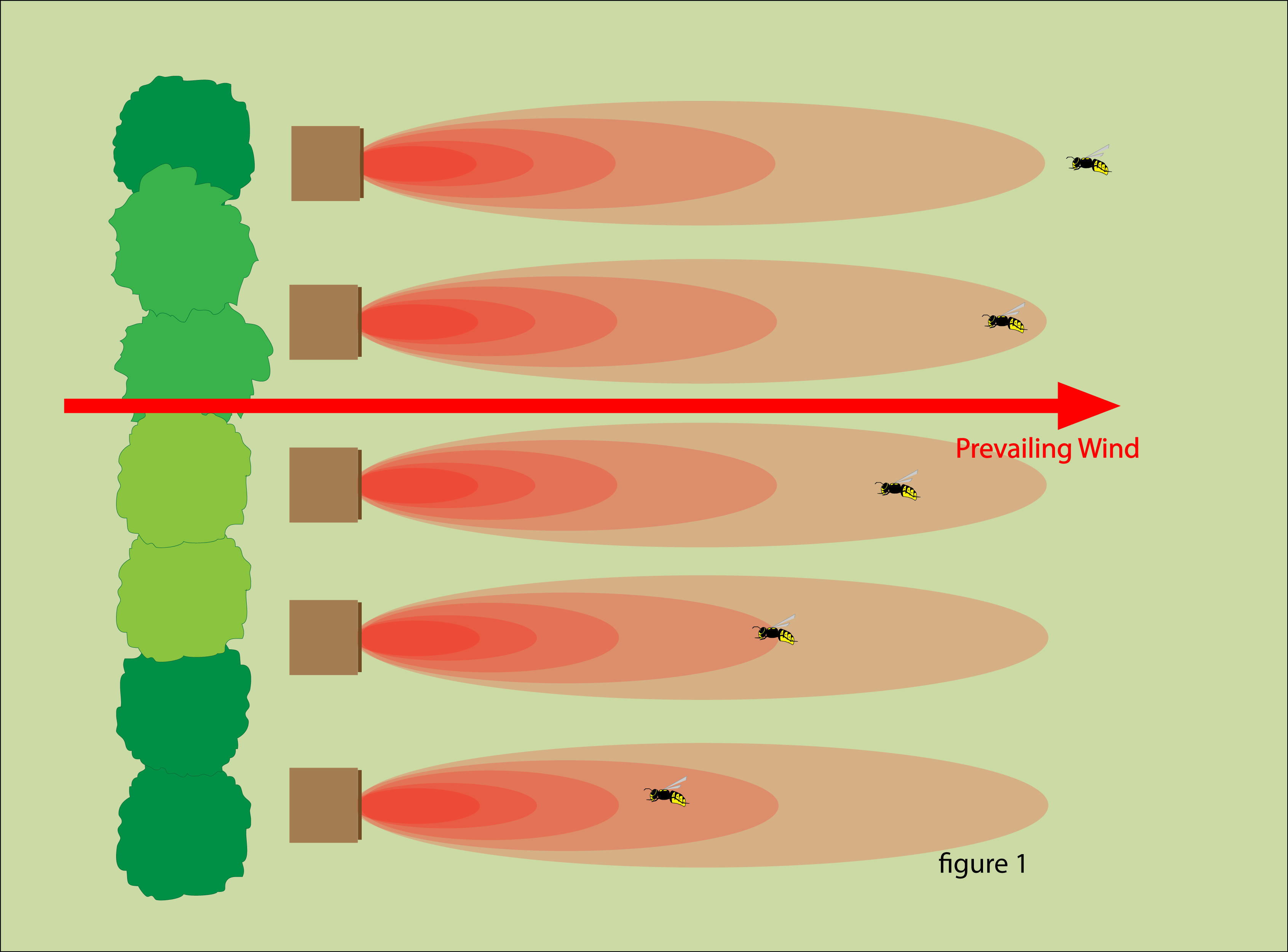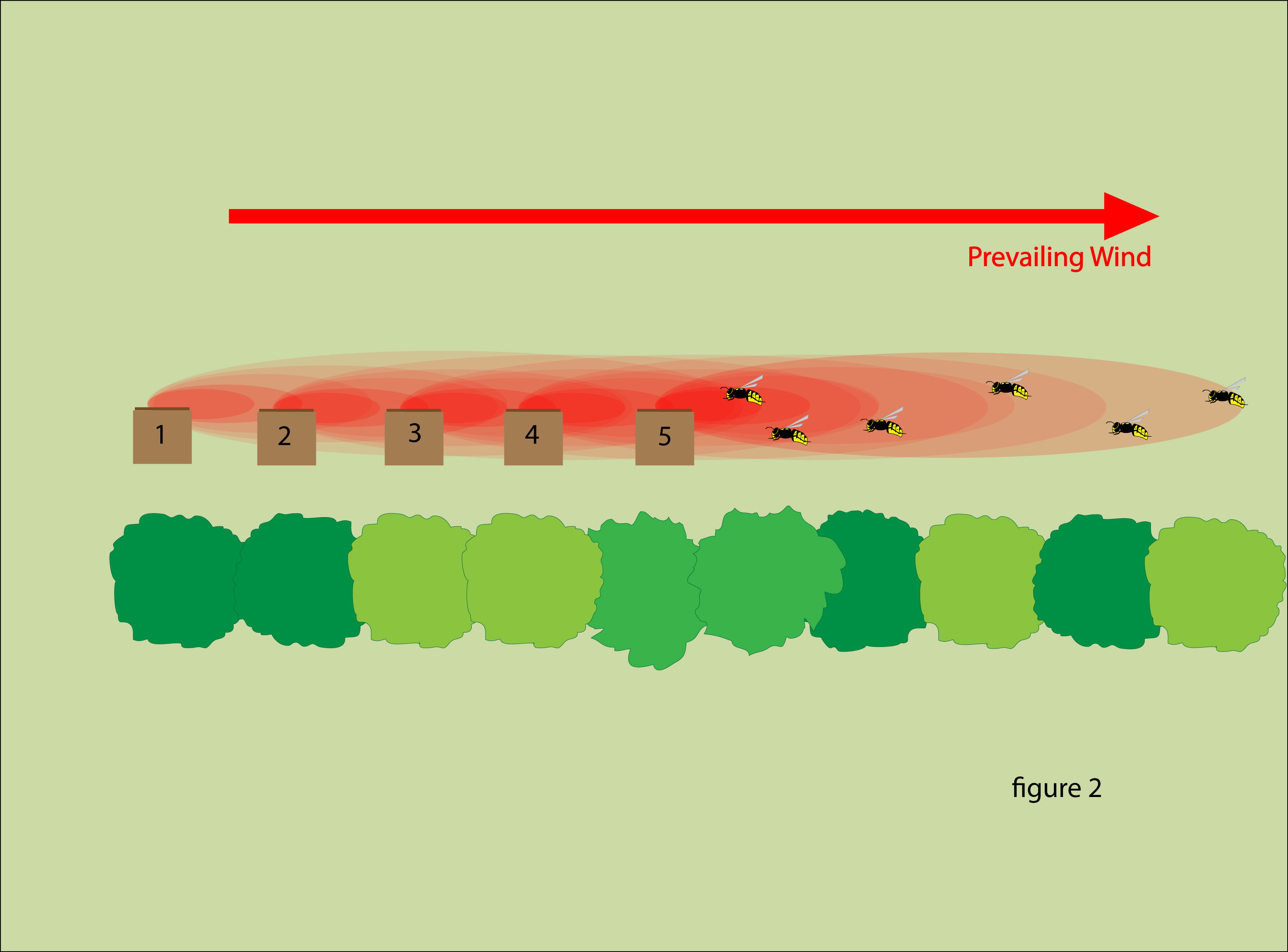The layout of an apiary can have a significant impact on wasp management. The essential factor is the prevailing wind direction at the time when wasp activity is at its highest. The topography of the land may mean that the prevailing wind direction is relatively constant, for example where wind is funnelled along valleys located between hills. In other situations the prevailing wind direction may change as late summer matures through to late autumn. Whatever the circumstances, prevailing wind is an important consideration.
Assuming that the option exists to vary the layout of an apiary then the bee keeper is faced with a choice that may influence which hive(s) will bear the brunt of any wasp attack. Much depends on bee keeping philosophy and whether wasps are valued as a natural means of culling out weaker hives that may be diseased thereby providing a mechanism of improving overall apiary fitness.
Figure 1 below represents a transverse arrangement where the prevailing wind blows across 5 hives situated in a field. In this arrangement the scent trails emanating from each of the hives remain discrete providing five available approach paths for wasps to fly up the scent concentration gradients leading to each of the hives. Such an arrangement will leave weaker hives more prone to wasp attack. On the plus side, any wasp attack will be diluted across all of the hives which may make it easier for the hives to repel the attacking wasps.
 Figure 2 below represents a longitudinal arrangement whereby the prevailing wind direction flows along the hives. In this arrangement there is one collective scent trail resulting from the amalgamation of the scent trails from each of the 5 hives. In this arrangement, hive No.5 will receive the brunt of the wasp attack followed by the other hives in order of scent trail. There are two options with this arrangement. One option is to place the strongest hives downwind starting at position No.5 which may then help protect weaker hives further up the scent trail. Alternatively, the bee keeper may elect to place their weakest hives downwind at position No.5 thereby distracting wasps away from the stronger hives.
Figure 2 below represents a longitudinal arrangement whereby the prevailing wind direction flows along the hives. In this arrangement there is one collective scent trail resulting from the amalgamation of the scent trails from each of the 5 hives. In this arrangement, hive No.5 will receive the brunt of the wasp attack followed by the other hives in order of scent trail. There are two options with this arrangement. One option is to place the strongest hives downwind starting at position No.5 which may then help protect weaker hives further up the scent trail. Alternatively, the bee keeper may elect to place their weakest hives downwind at position No.5 thereby distracting wasps away from the stronger hives.
Prevailing wind direction is also important with regards to where and how many WaspBane wasp traps will be required to protect the apiary.

 Follow
Follow
